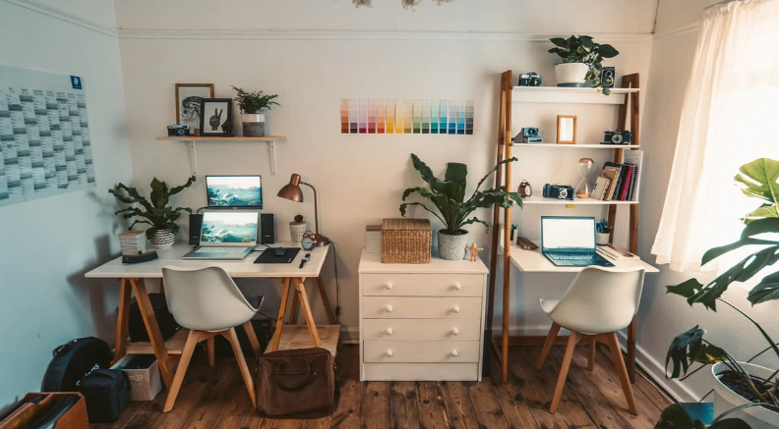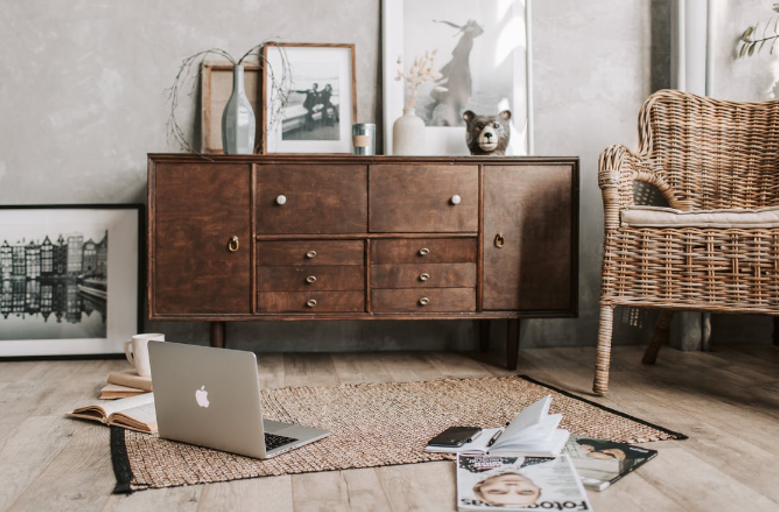Home should be good. Every day we leave the house and return to it back – and every time it is an opportunity to be inspired. Believe me, no matter how tired after work, everything is perceived much easier if you are greeted at home with coziness and comfort.
Try to check – with what feeling do you return home? Are you looking forward to entering your favorite kitchen and having dinner, or are you turning away with displeasure from a pile of rubbish in the hallway? If the latter, then you definitely need to read our article as soon as possible! The problem is not in you and not even in the house itself, but in what system you store things and how you organize your home space. Under the same conditions, you can create a convenient and comfortable home, or you can use the space inefficiently and turn the house into a warehouse. But the warehouse is for us, but today we will tell you about a cozy home and basic life hacks for storing things at home.

What conditions are optimal for storing things
Home storage systems are designed to save you trouble. Such as these: things get in the way, because they are not in their places, they “eat up” the usable space in the house, get dusty and dirty, as they lie idle, etc. All this in the end can slide into frank littering of your apartment, and the things themselves can simply become unusable. For example, in a closet, with improper styling and long storage without air, clothes can acquire an unpleasant smell of mezzanines. To prevent this from happening, we suggest that you observe the basic conditions for storing household items.
1. A certain temperature without drops
Ideally, the house should be from +16 to +22 degrees Celsius. But what if you store some things on the balcony or loggia? After all, it is difficult to maintain a stable temperature regime there, and in winter it is completely frosty. In this case, it is not recommended to store things there, since sub-zero temperatures will spoil those items that are not intended for use in frost: rubber, wood, fragile fabrics, paper, books, etc.
2. Certain humidity without fluctuations
It is important to observe the humidity of no more than 65% in the room. Because excessive moisture wears out materials (fabrics, rubber) and spoils wood (furniture, snowboards, skis, etc.), that is, things can change shape, become damp and lose strength.
3. No direct sunlight
Due to ultraviolet light, things can fade and dry out. This is especially true for fabrics and wood.
4. Some things are best stored in open storage systems, and some in closed ones.
That is why it is better to combine different storage ideas: open shelves, racks, chests of drawers, boxes, hangers, hooks, cabinets, baskets, pegboards, whatnots, etc. Books are best kept open so that the paper has access to air (it is ventilated and does not accidentally become damp in a closed cabinet).
5. Don’t stack things on top of each other
Even if there is not enough space, do not stack boxes and items of different categories on top of each other (clothes on a bicycle in the hallway, boxes on a stack of books, etc.). It looks ugly, spoils the appearance of the room, and also spoils the actual things themselves.

What principles should be observed when storing household items
1. Clearly define “passive” and “active” storage areas in your home
To do this, observe during one weekend at home, in which parts of the room you most often go for things, where you like to relax and work, and where you don’t even look. Now ask yourself – are these comfort zones? Organize storage so that access to things is as free as possible. For example, keep the box with chargers and wires near the computer, and place the closet with clothes closer to the window so that there is a source of natural light next to it.
2. Outdoor storage areas should always be comfortable.
Whether it’s a bookcase, a shelf with crockery, or coat hooks. Everything that is in sight creates the “face” of the house. Replace ugly things with stylish and nice matching designs. These little things will cheer you up every day!
3. Quick search for the essentials
This is one of the most important principles! To do this, define the storage logic that is convenient for you. For example, books can be arranged by color. Clothes can also be sorted by color or by type (holiday, casual, sports, etc.).
4. The most popular things are always “at hand”
This principle follows from the previous one. To do this, put those things that you use most often on the most convenient and closest shelves.
5. We need systematization according to the purpose of things
For example, in the hallway, you can install a special basket or box (or a wall organizer), where you will immediately have the things you need before leaving – payments, car keys, an umbrella, a sponge for shoes. And in the kitchen, cleaning products should be stored next to brushes and sponges for washing dishes – for example, you can install a basket under the sink.
6. You also need to organize things according to the season.
We live in a climate where there are two weather periods – winter (we need winter clothes and shoes, skis, snowboards) and summer (we need summer clothes and shoes, bicycles, scooters, tents and camping equipment).
7. For temporary things, it is worth providing a separate place.
If suddenly you have purchased a simulator, scales, sports equipment for some time, determine a convenient place for these things that will be easy to clean.
8. For every thing, in principle, there should be a place
The main rule of comfort is to return things to their place, and for this you must highlight these “your places”. If you can’t accustom yourself to this rule in any way, then you probably chose not very convenient places. Experiment, try and find the perfect places!
9. Use dividers heavily in large storage areas
For example, dividers in kitchen drawers for dishes, dividers on shelves for clothes, in a desk (for small office), in a dressing table (for cosmetics), etc.
10. Follow the principles of vertical storage in clothes and not only
Marie Kondo developed her own method, in which more things fit on the same piece of space, and it will be more convenient to use them. You will definitely start to find the right T-shirt faster, and it will become much easier to clean up.
11. Put heavier things downstairs and lighter things upstairs
It works very well! And another life hack for heavy things is boxes on wheels (which, by the way, can be pushed under the bed and save a lot of space).
12. Try to get rid of one old thing when buying one new thing
Although this is not easy, but this way you will save yourself from clutter and every time you will think before buying this or that new thing (this will protect yourself from spontaneous acquisition of unnecessary things).
13. Every home needs regular revision and sorting of things.
Spend it every six months or a year to keep at home only what you like, useful, necessary and pleasing to the eye. And the trash will not have a chance to go unnoticed!
14. Don’t store what you don’t use.
This includes various seasonal items, as well as things “for the future” and “for growth”.
15. You should not try to keep absolutely all your things in the house.
You still do not use them at the same time, it all depends on the specific case. Some of the things can be handed over to a convenient service – you can rent a warehouse for storing household items and take things back only when you need them.
